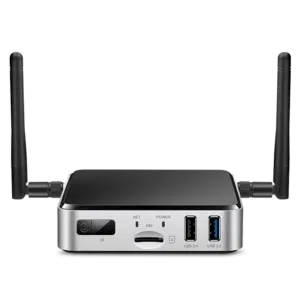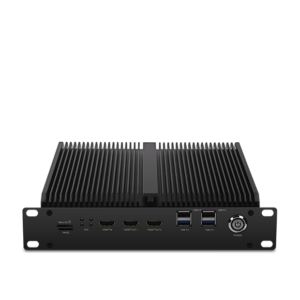AI on Side Devices vs. Cloud AI: Pros and Cons
AI on Side Devices vs. Cloud AI: Pros and Cons
Blog Article
The Impact of Running AI on Edge Devices
Real-World Purposes of AI on Side Devices
Artificial intelligence (AI) is no more confined to the sphere of big, centralized data centers. As a result of improvements in engineering, side products now play an integral position in deploying AI right where information is generated. But what does AI on edge products suggest, and why is it making this kind of news? Here, we'll investigate how edge ai devices works in real life through edge products and reveal their wide range of sensible applications.

What is AI on Edge Units?
AI on edge products identifies deploying artificial intelligence calculations on devices like smartphones, cameras, drones, or IoT sensors. These devices do not require usage of centralized servers for handling information; as an alternative, they conduct evaluation and conclusions locally, making the process faster, better, and usually more secure.
The "edge" here merely identifies processing performed near to or at the source of information era, rather than relying on the cloud. This shift is pushed by the demands for real-time information running and the necessity to reduce latency, improve solitude, and reduce bandwidth usage.
Key Real-World Applications of Side AI
1. Clever Monitoring
AI-powered cameras equipped with face acceptance, activity detection, and anomaly recognition are transforming security systems. Side units in that domain can analyze video revenues in real-time to identify suspicious actions, remove fake sensors, and improve community safety. Like, AI methods may detect strange actions and attentive authorities quickly without the need to deliver movie information to a main machine for analysis.
2. Healthcare Tracking
Wearable devices and portable medical equipment are leveraging m.2 ai accelerator for managing wellness data more efficiently. Edge-based AI in products like wellness trackers and smartwatches monitors users' vitals, such as heartrate, air degrees, or blood stress, in real-time. These techniques analyze data locally and offer quick feedback, paving the way in which for faster treatment throughout emergencies.
Beyond wearables, sophisticated medical imaging products built with on-device AI can find signals of diseases like cancer, enabling earlier in the day diagnoses even in distant parts without web connectivity.
3. Autonomous Cars
Self-driving vehicles are among the absolute most well-known types of edge AI in action. With devices, cameras, and LiDAR systems providing as data sources, AI computations take position onboard these cars to make split-second decisions. From sensing pedestrians and limitations to moving city streets, edge AI ensures that the automobile runs easily and efficiently. The real-time processing capability of edge devices removes the reliance on high-latency cloud methods, ensuring safety in life-critical scenarios.
4. Retail Analytics
Side devices in retail situations are supporting firms analyze customer behavior. Intelligent racks and AI-equipped cameras may discover customer preferences, check stock, and also customize in-store experiences in real time. The data developed from they assists merchants make informed decisions, increase client satisfaction, and optimize supply management.

5. Industrial IoT
Factories and industrial crops are adopting edge AI to revolutionize their checking and automation processes. AI-powered detectors on equipment detect potential defects well before they result in expensive failures. Predictive preservation driven by side AI decreases downtime, enhances output, and assures safety on the manufacturing floor.
6. Personalized Experiences in Consumer Devices
Your smartphone is a primary exemplory case of how side AI personalizes user experiences. Functions such as for example voice personnel, adaptive camera options, and on-device language translation use real-time AI to react to person needs without giving sensitive data to outside servers. That fosters both comfort and privacy for the conclusion user.
The Growing Affect of Edge AI
The ownership of AI on edge devices continues to surge, driven by industries' increasing demand for low-latency, real-time computing, and greater knowledge privacy. Their purposes are reshaping industries which range from healthcare and automotive to public safety and retail. By adding AI's energy closer to wherever information is generated, side units are not just improving efficiency but in addition showing the limitless potential of creativity in the present connected world. Report this page